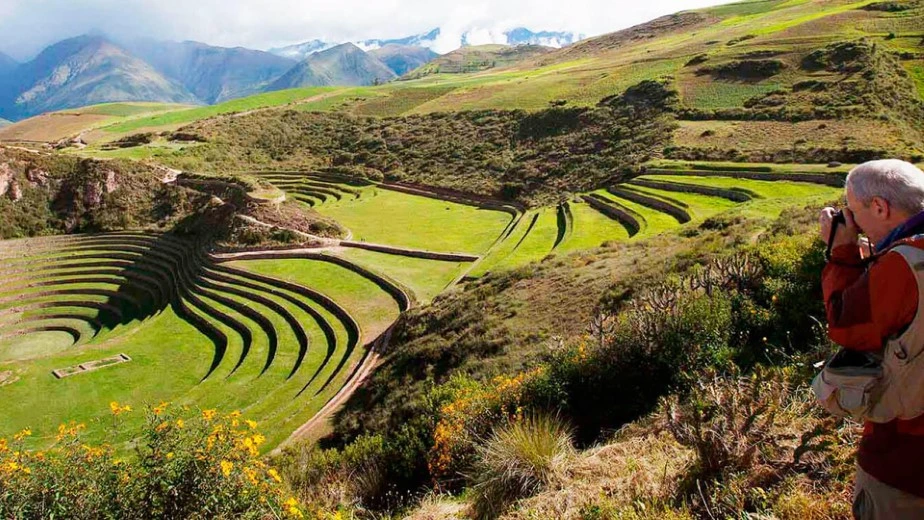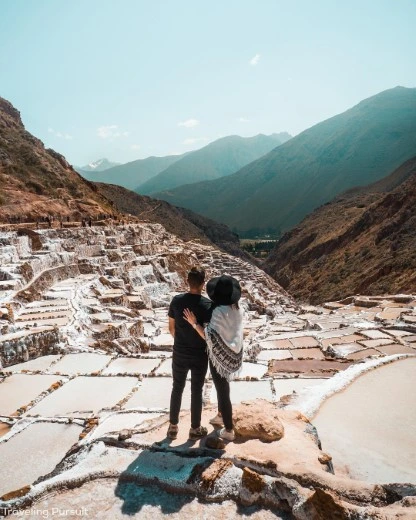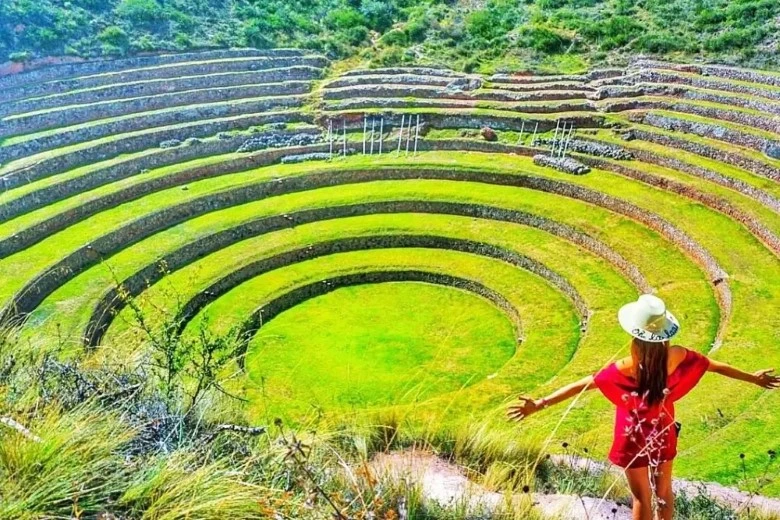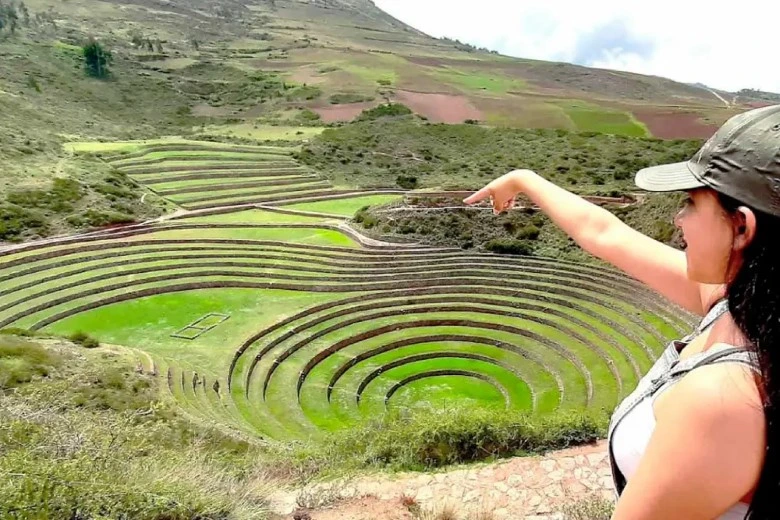Visiting the Sacred Valley of the Incas in January can be the best decision if you are looking for lush landscapes and fewer crowds, as long as you pack properly and plan indoor activities for rainy days. Below, we share the main advantages and disadvantages of traveling during this time, the expected weather, the best places to visit, and other useful tips. With this information, you’ll be well prepared to have an unforgettable experience in the Sacred Valley of the Incas during January.
Advantages of Visiting the Sacred Valley of the Incas in January
- Green and vibrant scenery: Thanks to the rains, the farmlands, mountains, and overall vegetation turn into an intense green. This vibrant color enhances the valley’s natural beauty and creates a spectacular contrast with the ancient Inca terraces.
- Fewer tourists: January is part of the low season due to the rains, so you’ll find fewer visitors at the main archaeological sites. This allows you to explore places like Pisac, Moray, or Chinchero more calmly. It’s ideal if you want a more relaxed and authentic experience.
- Lower prices: Many hotels and other services offer discounts on lodging during January.

Disadvantages of Visiting the Sacred Valley of the Incas in January
- Frequent rain: January has about 22 rainy days, which can affect visibility and trail conditions.
- Risk of muddy trails: Hikes like the Inca Trail can become slippery, requiring proper gear and/or alternative routes.
- Possible closures or delays: Some train routes and mountain excursions may face cancellations in case of heavy rain.
- High humidity: With an average of 86% humidity, the environment can be uncomfortable for those not used to it.
- Reduced visibility at archaeological sites: Cloudy days and morning mist may make it harder to fully enjoy the views of the Inca structures.

Weather in the Sacred Valley of the Incas in January
- Maximum temperature: Around 57°F (14°C) during the day.
- Minimum temperature: Around 45°F (7.3°C) at night.
- Precipitation: Approximately 10.35 inches (263 mm) of rain throughout the month, mainly concentrated in afternoon showers.
- Rainy days: About 22 days with rain or drizzle.
- Sunlight hours: About 4 hours of sun daily, with the rest of the day cloudy or rainy.
- Rainy season: Extends from October to April, with January being one of the wettest months.

Best Places to Visit in the Sacred Valley of the Incas in January
- Maras (Salt Mines of Maras): Its salt pools on terraces contrast beautifully with the surrounding green, and the rain enhances the sky’s reflection in the water.
- Moray: Its circular terraces offer a deep green spectacle after the rains.
- Chinchero: Known for its Sunday market, which also operates in January, where local artisans display their textiles.
- Pisac: Archaeological ruins and a traditional market with fewer crowds during the rainy season.
- Ollantaytambo: An Inca fortress and living town, ideal to explore in the dry morning and take refuge in its cafes if it rains.
- Urubamba: The operations center and starting point for excursions, with options for restaurants and craft workshops indoors.
Frequently Asked Questions About the Sacred Valley in January

1. What to do in the Sacred Valley of the Incas in January?
You can combine archaeological tours with weaving workshops in local communities and opt for the scenic train to Machu Picchu if heavy rain occurs.
2. What to bring to the Sacred Valley in January?
- Waterproof jacket and rain poncho
- Non-slip trekking shoes
- Thermal long-sleeve clothes for the night
- Sunscreen, sunglasses, and hat (UV radiation remains high)
- Insect repellent and basic medicine
3. Is it worth visiting the Sacred Valley of the Incas during the rainy season?
Yes, it’s definitely worth it, especially if you enjoy vibrant green landscapes. It’s also great if you appreciate the peace of traveling with fewer tourists and the chance to find better prices on lodging and services.
That said, to fully enjoy your experience during the rainy season, it’s important to plan ahead. Include indoor activities for heavy rain days and choose flexible itineraries that can adapt to sudden weather changes.
4. Can the Sacred Valley be combined with Machu Picchu in January?
Yes. The train to Aguas Calientes operates year-round, even in January. However, it’s advisable to book in advance and anticipate possible delays due to rain affecting the railway.
5. How will the rains affect tours to the Sacred Valley of the Incas?
One-day tours to the Sacred Valley typically adjust schedules to avoid heavy rainfall hours, and in cases of extreme weather, they reschedule or change the route.
6. How does altitude affect visiting the Sacred Valley in January?
The Sacred Valley ranges between 9,200 ft (2,800 m) and 13,100 ft (4,000 m) above sea level. It’s best to acclimate in Cusco for a few days and stay hydrated to avoid altitude sickness.

Visiting the Sacred Valley of the Incas in January offers green landscapes and fewer tourists. However, frequent rains and the risk of muddy trails can make some activities challenging. It’s important to bring proper clothing such as waterproof jackets and trekking shoes. Despite the rain, it’s an ideal time to enjoy the tranquility and beauty of the place. Contact us today and book your spot to visit the Sacred Valley of the Incas in January.
Sacred Valley of the Incas Tours You Might Be Interested In:
- Sacred Valley VIP – 1 Day
- Sacred Valley VIP, Machupicchu – 2 Days
- Sacred Valley Vip, Machu Picchu, Palccoyo – 5 Days
- Sacred Valley vip, Machupicchu, City Tour, Rainbow Mountain – 6 Days
- City Tour, Sacred Valley vip, Machupicchu, Rainbow Mountain, Humantay Lake – 6 Days
- Sacred Valley, Machupicchu, Manu Cultural Zone, Red Valley, Rainbow Mountain – 8 Days
The Sacred Valley of the Incas in December: Learn the advantages and disadvantages of visiting that month.
➜ Sacred Valley of the Incas in December: Complete Travel Guide
Everything you need to know before your trip to the Sacred Valley in February, the rainy season.
➜ Sacred Valley of the Incas in February: Weather, pros, and cons of visiting
